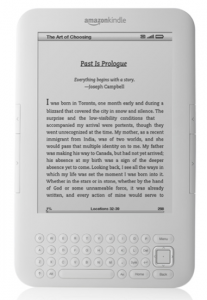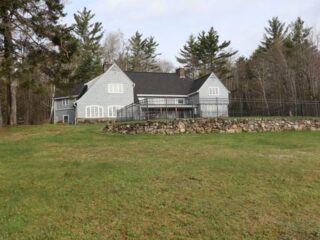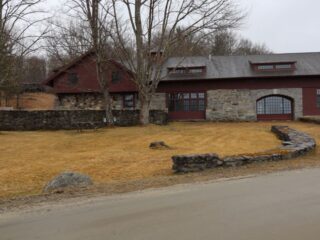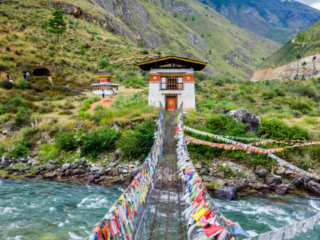by Kelly Jean Egan
My second to last night in the jungle finds me in the passenger seat of a ramshackle vehicle driving to the outskirts of Puerto Maldonado, the gateway to the southern Peruvian Amazon. We are leaving the city, seeking once more the dark, fecund shelter of the forest.
Amado, a middle-aged Peruvian man wearing Adidas pants and a baseball cap, is behind the wheel. He is the ecolodge’s affiliate curandero, serving their “alternative tourism” offering. I booked one night with the lodge but instead of spending it in the luxury of my first really clean room in a month, I’ve just been living as a writer-in-residence at a research station deep in the jungle. I am headed once more to a cabin in the woods. In the backseat is Maria, a quiet, local girl who, along with myself, wishes to sample the notorious medicine.
Ayahuasca is a Quechua word variously translated as “vine of the soul” or “rope of the dead.” The plant it refers to, known also by a slew of other native terms such as yage or caapi, is an inconspicuous forest liana whose woody stem is pounded and boiled with various other plant ingredients by indigenous peoples throughout the Amazon. The resulting brew is a foul-tasting concoction that has become a sort of Everest for soul-seekers and spiritual explorers. Although I did not travel to the Amazon with the explicit intention of trying ayahuasca, its presence, beckoning like a siren from deep within the green vaults, formed an inherent part of the region’s allure. It is no surprise that so many writers, scientists and explorers have been compelled to try it–each of their voyages like a pilgrimage to some dark muse.
Perhaps preceded by indigenous folktales documenting episodes with the plant and its magical origins, a canon of Western ayahuasca-inspired literature has begun to emerge. It is comprised of accounts written by some of our most trusted sorcerers of language, including W.S. Merwin, Peter Matthiessen, Allen Ginsberg, William S. Burroughs and Mario Vargas Llosa, as well as scientists, such as Wade Davis and Alberto Villoldo, who have been inspired to long narratives documenting the amorphous entity of this peculiar psychedelic experience.
To drink yage, Reichel Dolmatoff wrote, is to return to the cosmic uterus and be reborn. It is to tear through the placenta of ordinary perception and enter realms where death can be known and life traced through sensation to the primordial source of all existence. When shamans speak of facing down the jaguar, it is because they really do. (Wade Davis, One River)
We head off the main road and into the trees, arriving half an hour later at a small cabin alongside the river. There is no electricity inside and no furniture but for a small table and a few cushions scattered on the floor. Amado unpacks items from his battered suitcase and arranges them on the table: a crucifix, a smudge stick, a candle, a wide-jawed anaconda head. In the car, he told me that I could expect a large snake, an anaconda, to wrap around me during the trip. But how? I know that a rich cosmology surrounds the ayahuasca tradition, the point of which I have come to vaguely understand is to engage the participant on the level of metaphor, to blur the distinction between myth and reality and to arrive along this path at a place of healing. Jaguar, snake, death–the ritual is meant to summon the demons so you can face them down.
He is now wearing an off-white robe. I did not see him put it on, but as though a curtain has been raised, the atmosphere in the room has suddenly shifted: we are now engaged in ritual. Amado regales us briefly with the dangers of using ayahuasca in anything other than a serious manner and the dangers of taking it with fear. Our fear will make it difficult for him to help us. Tienes miedo? he asks, wondering if I am afraid. No, I answer truthfully, and he hands me a small cup filled with a shot’s worth of a murky reddish brew, advising me to ask the plant for its guidance and safety. I compose a silent prayer before swallowing it down, agreeing later with ethnobotanist Wade Davis’ apt observation that the smell and taste was “that of the entire jungle ground up and mixed with bile.”
Indeed, the ayahuasca experience is naturally intertwined with that of the jungle itself, just as the liana grows around branches and trees. Over the course of my stay in the rainforest, intense fear and disbelief of my surroundings gave way to a widening aperture through which the experience of the jungle flowed–a palpable, kaleidoscopic tapestry appealing to all the senses and plucking psychic chords.
I lay on my back watching moonglow peek through the wooden beams of the ceiling, listening to the rhythmic banter of insects, frogs and nocturnal birds that has become so familiar, waiting for things to change, waiting for the jungle to invade my body the way it has already invaded my memories with the smell of humus coming in waves through a sun-dappled understory, flickers of dragonflies’ translucent wings, the softness of rotting logs swamped with fungal gardens like coral reefs, the sound of rain pounding the roof, a tarantula crawling across the floor of my room, and mostly, the view of the distant canopy from a lookout point, or mirador. My mind marvels at its vastness, wandering in search of uncontacted tribes.
A sound with a texture, a colored vibration…a green resonance, the color of the jungle reverberates through my body, from my ears to my feet. (Alberto Villoldo, The Four Winds)
…and then I began to get high–and then the whole…Cosmos broke loose around me, I think the strongest and worst I’ve ever had it nearly– (Allen Ginsberg, The Yage Letters)
The jungle is a world of camouflage and trickery, a place where countless things are happening beyond the radar of the human eye. As Amado escorts me with his flashlight to the outhouse around the back of the cabin, I question my ability to spot a snake in the grass or a spider against the wooden walls when every blade and grain seems aglow with motion.
Back inside, all mental barriers, all constructs of time and space, begin to break down. Soon, there are no distinctions. Time is a singular, non-linear entity spilling over me. My whole month in the jungle, my whole life, is gathered into the moment. I see “death” as a vision of stars and space, and us as omniscient invisible presences floating through space, dead though not separate from the living. I imagine Amado is dead but that he is here all the same, because in the darkness it seems that he is next to me and not next to me all at once. I realize how unnecessary it would be for people on earth to be so sad if I were to die, for the separation is not real. And then a vision comes from the black depths of stars–a Caucasian foot with a golden sparkle on the ankle floating toward me, bizarre and beautiful.
I shut my eyes, and the world inside my head began to spin and pulsate with warmth and a sensual glow that ran over a series of euphoric thoughts, words that stretched like shadows across my mind, paused, and then took form as diamonds and stars, colors rising from the periphery of consciousness and falling like demons and angels in a chaotic mix of dream and paranoia. (Davis)
Lying in the dark, I watch my entire life float by behind my eyelids. The medicine is teaching me what lies behind the surface of my reality; it’s churning up the warped infrastructure of stale old memories, habits and complexes, and turning it to liquid. I don’t feel nauseous but nonetheless I heed Amado’s urging and let him sit me up in the darkness to lean over a bucket of Maria’s vomit. That is when the sudden realization blossoms into my brain that if I purge the liquid, these blueprints will no longer dictate my life. Wretching in silence, I find myself inside of a metaphor where the physical and the emotional, the cancerous toxins and the psychological patterns, are seamlessly one and the same. Likewise, without any influence other than the medicine itself, both Davis and Villoldo seem to have arrived at a similar realization. Davis said it best:
It was as if my stomach, acting as a conscious entity, had sought out and purged every negative thought and fear trapped within the maze of my mind.
Ginsberg also had his inklings:
I felt like a snake vomiting out the universe.
Villoldo, a psychologist whose book The Four Windsis the only ayahuasca account I read before having my own experience, at first merely intrigued me, but now I find the meaning of his cryptic descriptions unmistakable.
An emptiness, a hollowness inside, where I fancied that the jungle breeze, the gentle wind that moved the leaves, moved inside of me, in the empty spaces in my gut, emptied of…what? Memories?
As the teachings of ayahuasca continue to surface months and years after the ceremony, it is these fellow psycho-literary pioneers and their accounts that have been my everlasting companions. But they are also guides, shamans by virtue of their linguistic powers that enable them to exist simultaneously on two planes, seamlessly blending the visionary and the real. Their words deepen my understanding.
Amado pours water over my head. I lie back on the cushions while he shakes wet leaves over me and murmurs an icaro, weaving my name into the song again and again, calling on the plant to work in me. Maria has been quietly immersed in the world of her visions since she vomited hours ago. (Later, she tells me that a great snake wrapped around her and she saw the whole of her life unfold like a film behind her eyelids.)
I am realizing that it is only after I’ve cleared myself of the toxins cluttering my body and mind that visions may come. Finally, one does. It is equal parts image and feeling, and while fleeting, is so vivid that it stays suspended in my mind for a long, still moment. I see a tiny cabin lit from within by one meager light and nearly suffocated by endless layers of dense growth at the heart of the jungle. It conjures feelings of not only the most intense claustrophobia, but also of ultimate severance from humanity. It is mingled with my feelings of claustrophobia and squeamishness on first arriving in the jungle, and it resonates with childhood fears that used to surface only in dreams of becoming lost and cutoff forever. It is as though, at the bottom of the night, I have tapped an artery of undiluted, primal fear, which manifests as the climax of my meditations on the depth of the jungle.
and the black jaguar / from the other side of fear / in whose form he could go anywhere / came to him just at the hour / before daylight when from the floor / of the forest curled roots that were / the old woman’s hands rose to offer / the bowl that would restore him (W.S. Merwin, The Real World of Manuel Cordova)
We emerge from the cabin as the purple-gray hues of dawn are just beginning to seep into the clearing indicating a quiet, normal morning. Que vistes? What did you see? The receptionist at the lodge asks me eagerly when we return; coming from the States, it seems enormously strange for my psychedelic visions to be of public concern. Mi vida, is all I can say–my life. Then I stumble off to my tranquil room of polished wood with its lime green queen-sized bed where I spend the last few hours of my stay sleeping off the receding tides of the plants effects. But, like that prickly feeling beneath my skin, like the smell of damp earth, it doesn’t leave me entirely.
Perhaps what I have learned is that the power of the jungle is in its potential to catapult the visitor into a frame of mind where magic, mysticism and sorcery do exist–in the mind, in the plants, in the realm of metaphor. The next day I fly to the city of Cuzco, high up in the Andes mountains, and the chill of the alpine air after a month in the sweltering jungle is like the aftermath of catharsis.









